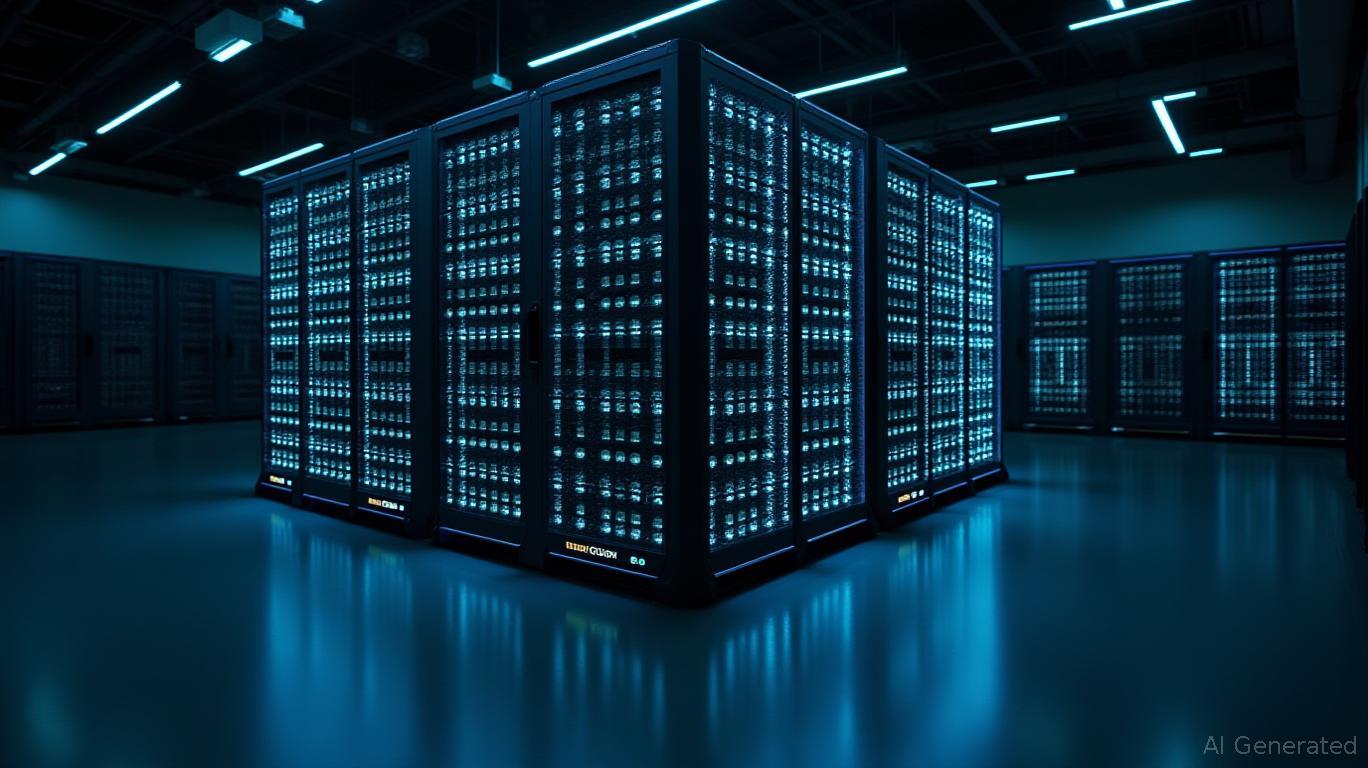NVIDIA's AI Ecosystem and Biopharma's Future: A Paradigm Shift in Drug Discovery
The biopharma industry is undergoing a seismic shift, driven by the fusion of artificial intelligence (AI) and advanced computing. At the epicenter of this transformation is
, whose collaboration with Novo Nordisk and Denmark's Danish Centre for AI Innovation (DCAI) via the Gefion supercomputer is redefining drug discovery. This partnership exemplifies how scalable AI infrastructure and cutting-edge tools are accelerating therapeutic innovation, creating compelling investment opportunities in both biotech and technology sectors.NVIDIA's Strategic Play: Building an AI Ecosystem
NVIDIA's move into AI-driven drug discovery isn't merely a foray into healthcare—it's a strategic play to dominate an $800 billion global pharmaceutical market. By partnering with Novo Nordisk, a leader in diabetes and rare disease therapies, NVIDIA is leveraging its expertise in GPU-powered supercomputing to address the industry's most pressing challenges: reducing the average $2.6 billion cost and 10-year timeline of drug development.
The Gefion supercomputer,

The Gefion Supercomputer: A Catalyst for Innovation
Gefion's capabilities extend far beyond traditional genomic models and protein design. For instance:
- Orbis Medicines is using Gefion to design 700,000+ novel oral macrocycles—molecules that target hard-to-reach proteins, potentially displacing costly biologics. This work leverages Gefion's ability to screen 140 billion compounds in silico, slashing R&D costs.
- Lundbeck, a leader in neuroscience, is accelerating drug discovery for neurological disorders by simulating molecular interactions at speeds unattainable with classical methods.
- Researchers at the University of Copenhagen are even exploring quantum computing algorithms on Gefion to predict drug-target interactions, a breakthrough that could unlock therapies for previously “undruggable” targets.
These projects highlight how AI is democratizing access to high-performance computing, enabling startups and mid-sized firms to compete with Big Pharma.
Case Studies in Action: From Molecules to Markets
Take Orbis Medicines' nCycles platform. By combining Gefion's computational power with its proprietary libraries, Orbis has reduced the timeline for identifying viable drug candidates from years to months. This efficiency could lower the cost of bringing a drug to market by over 40%, a game-changer for investors in biotech. Similarly, Lundbeck's use of Gefion to tackle rare neurological diseases positions it to capture high-value niche markets, where orphan drug pricing offers premium revenue streams.
The broader AI ecosystem also benefits. NVIDIA's partnership with Siemens to integrate its tools into Xcelerator—a platform used by BMW—shows how AI's applications are cross-industry. This scalability reduces risk for NVIDIA's investors, as demand for its infrastructure spans healthcare, automotive, and energy.
The Broader AI Infrastructure Opportunity
Investors should look beyond individual biotech stocks to the enablers of this revolution: AI infrastructure plays. NVIDIA's DGX SuperPOD technology, the backbone of Gefion, is now being deployed globally. For example, Germany's new industrial AI cloud, powered by 10,000 NVIDIA GPUs, underscores the growing demand for such systems.
NVIDIA's stock has outperformed the broader market since 2020, driven by AI adoption. As partnerships like Gefion scale, this trajectory could continue, especially with the FDA's recent push for AI in regulatory pathways.
Investment Implications: Where to Look
- NVIDIA (NVDA): The clear leader in AI hardware and software, NVIDIA's role in Gefion and quantum computing (CUDA-Q) positions it for sustained growth.
- Biotech Collaborators: Companies like Novo Nordisk (NVO) and Lundbeck (LUDBY) gain a first-mover advantage in AI-driven pipelines.
- AI Infrastructure ETFs: Funds like the ARK Dis disruption ETF (ARKK) or the iShares Robotics & Autonomous Tech ETF (IRBO) offer diversified exposure.
- Emerging Players: Startups like Teton (AI care companions) and Go Autonomous (multi-modal AI) exemplify the ecosystem's scalability—keep an eye on venture capital activity here.
Risks and Considerations
- Regulatory Hurdles: FDA approval timelines for AI-generated drugs remain uncertain.
- Compute Costs: While Gefion is a breakthrough, smaller firms may struggle with the capital intensity of AI infrastructure.
- Competition: Intel's Habana Labs and AWS's EC2 instances pose challenges to NVIDIA's dominance.
Conclusion
NVIDIA's collaboration with Novo Nordisk and DCAI's Gefion supercomputer marks a pivotal moment in biopharma. By enabling faster, cheaper, and more precise drug discovery, this AI ecosystem is creating a new paradigm—one where innovation is no longer bottlenecked by trial-and-error experimentation. For investors, the opportunities are vast: from direct exposure to NVIDIA's tech to biotech firms leveraging these tools to unlock first-in-class therapies.
The question isn't whether AI will transform healthcare—it's already here. The next step is to invest in the companies and infrastructure driving this revolution.

Comments
No comments yet